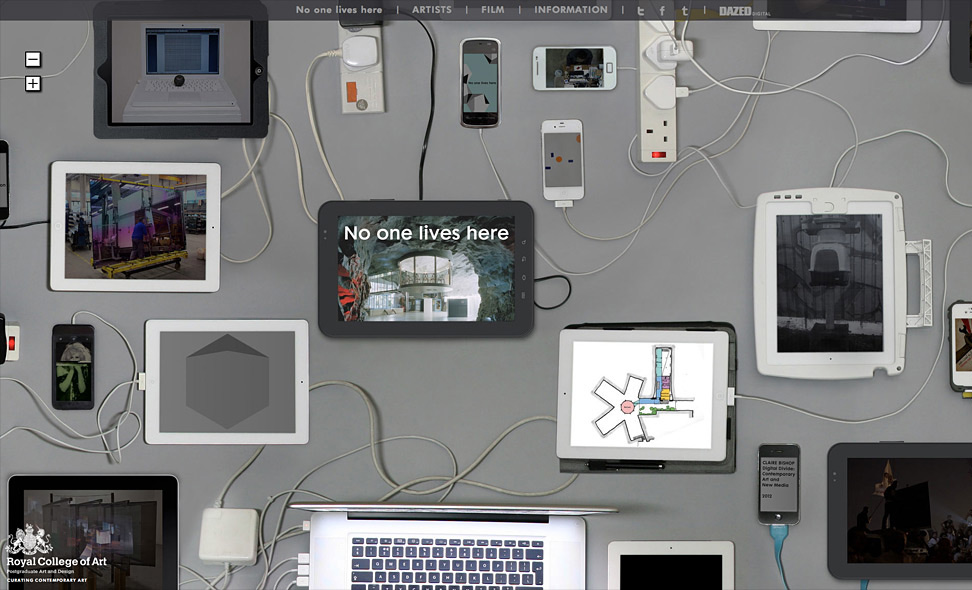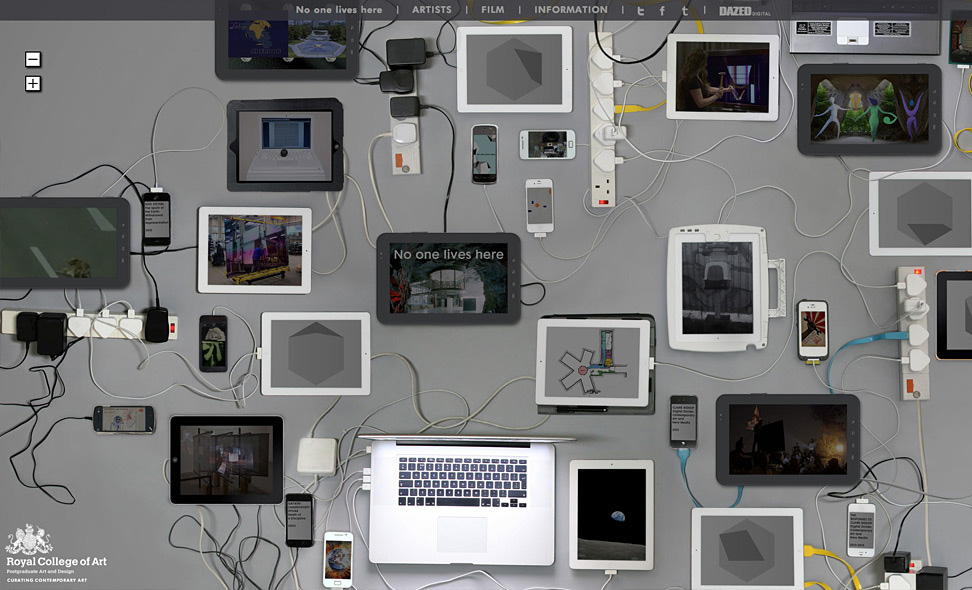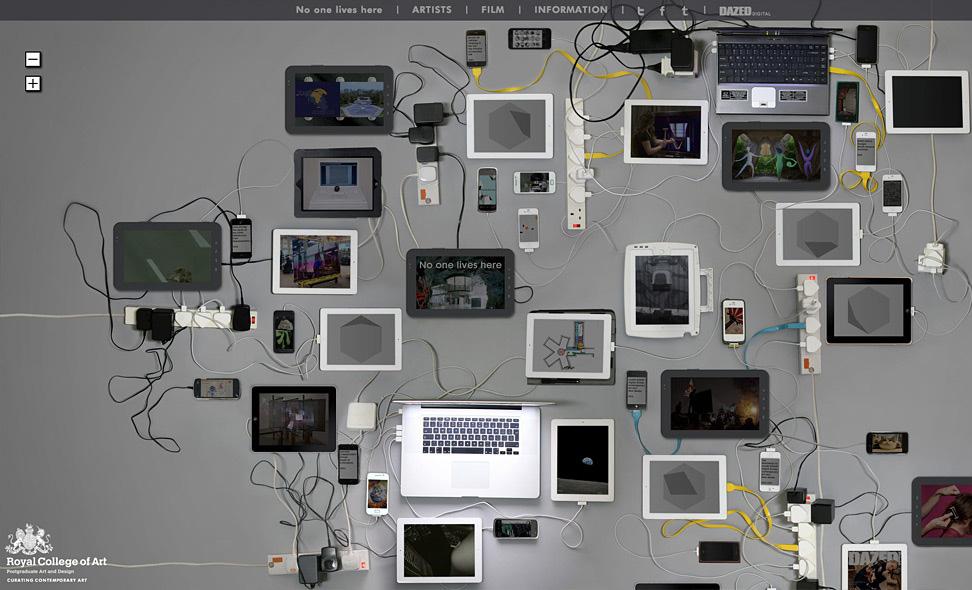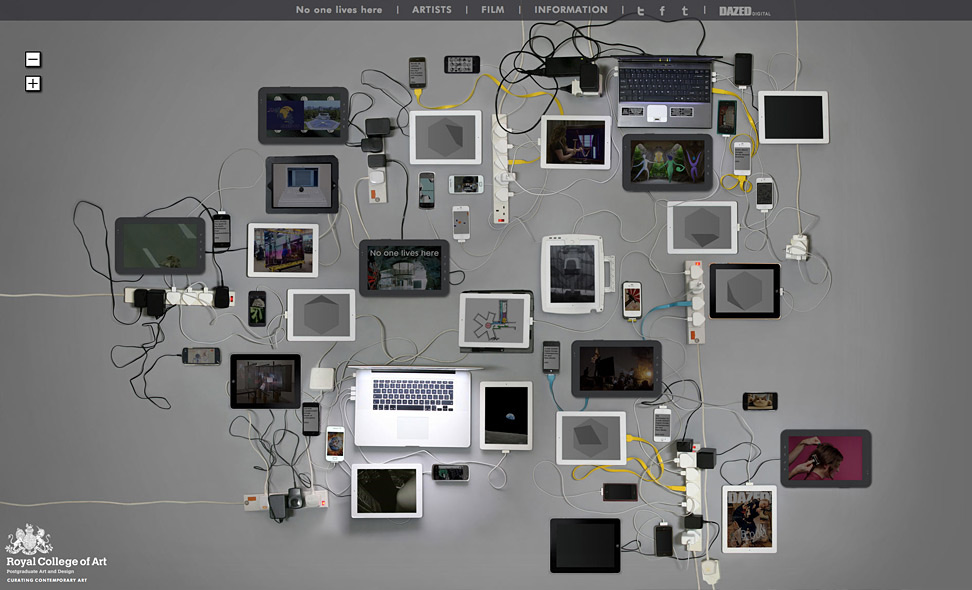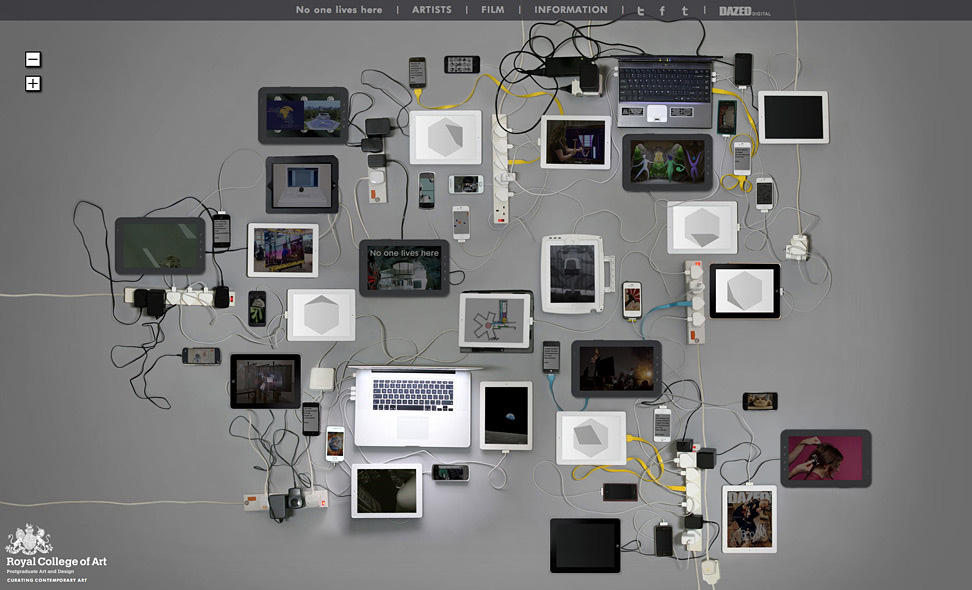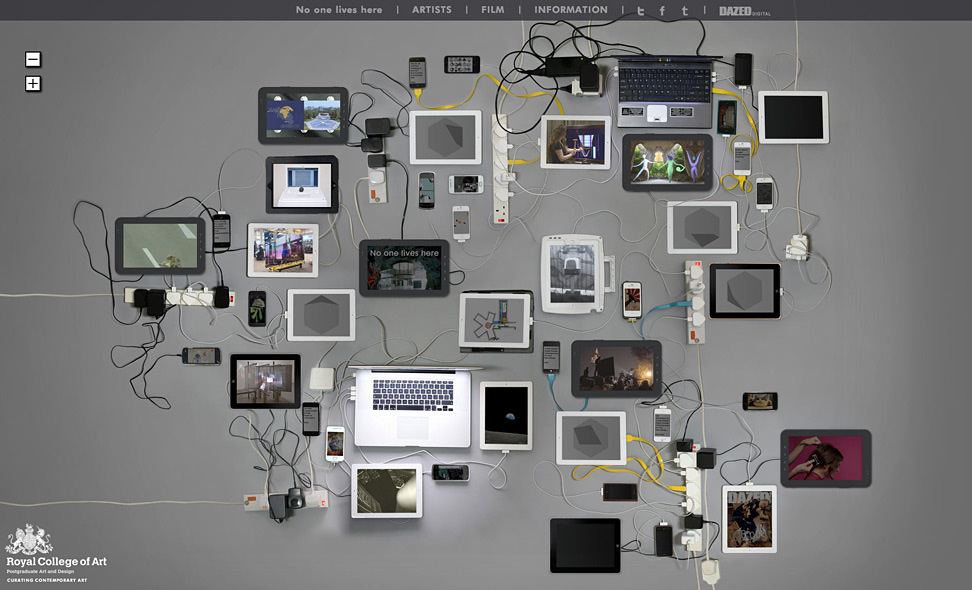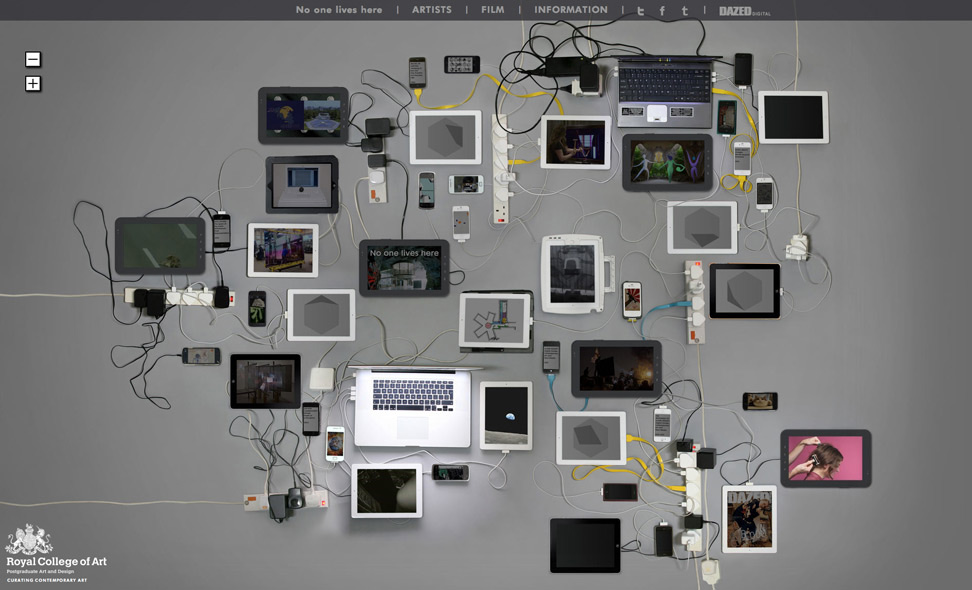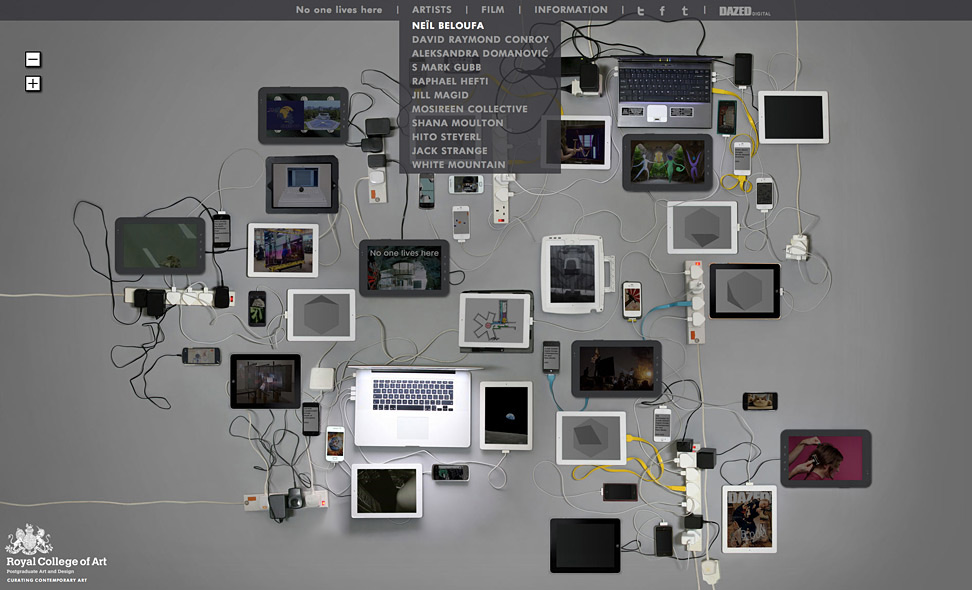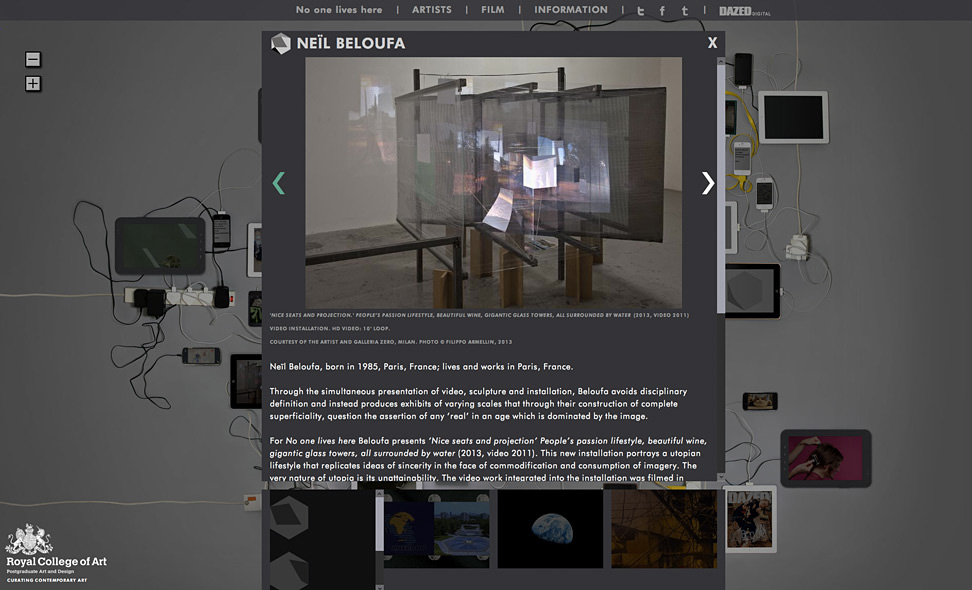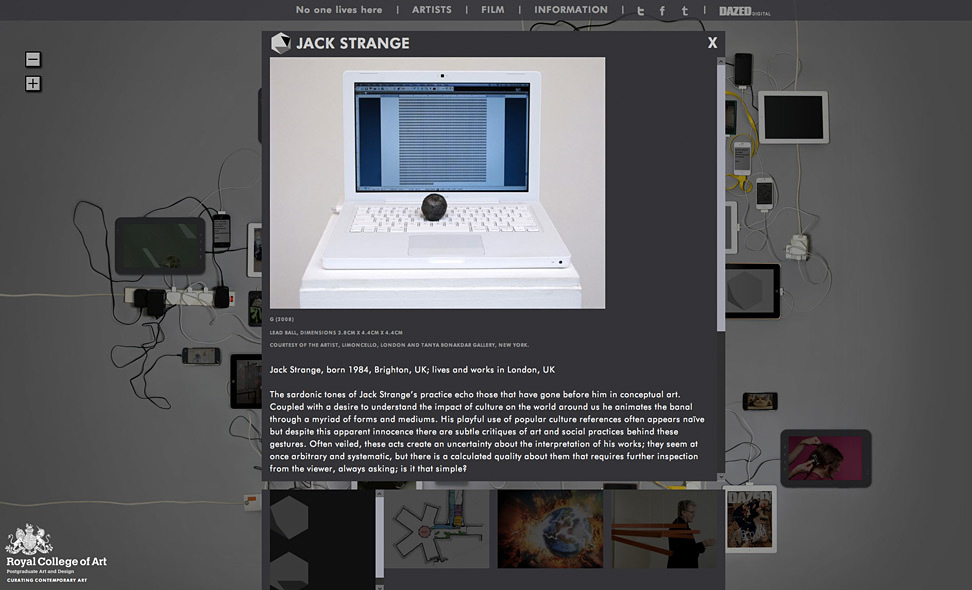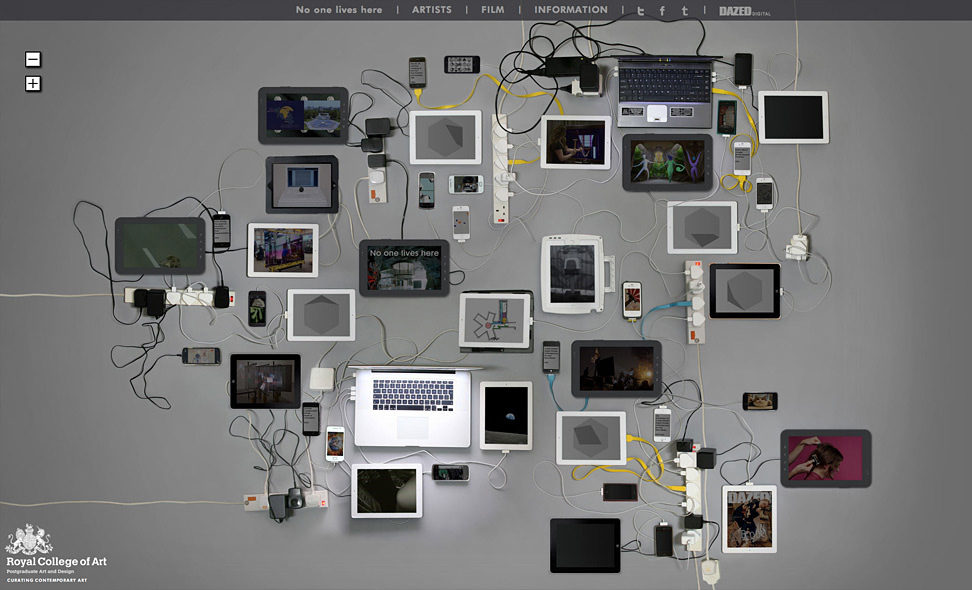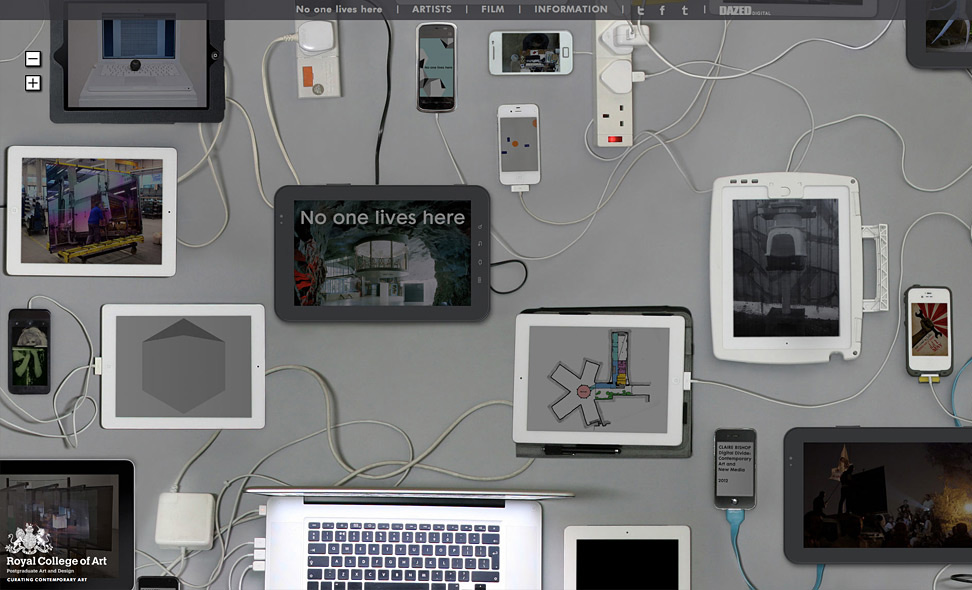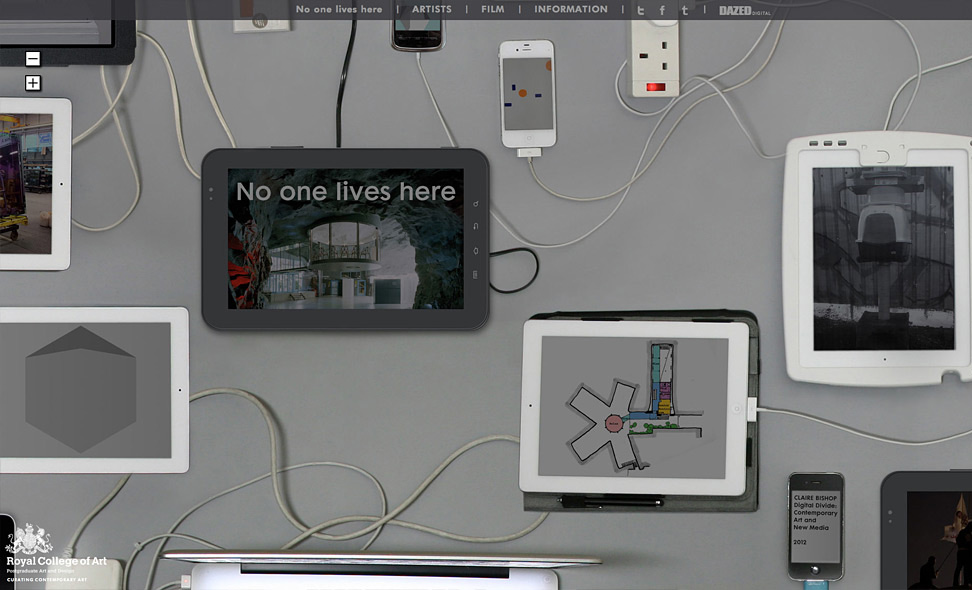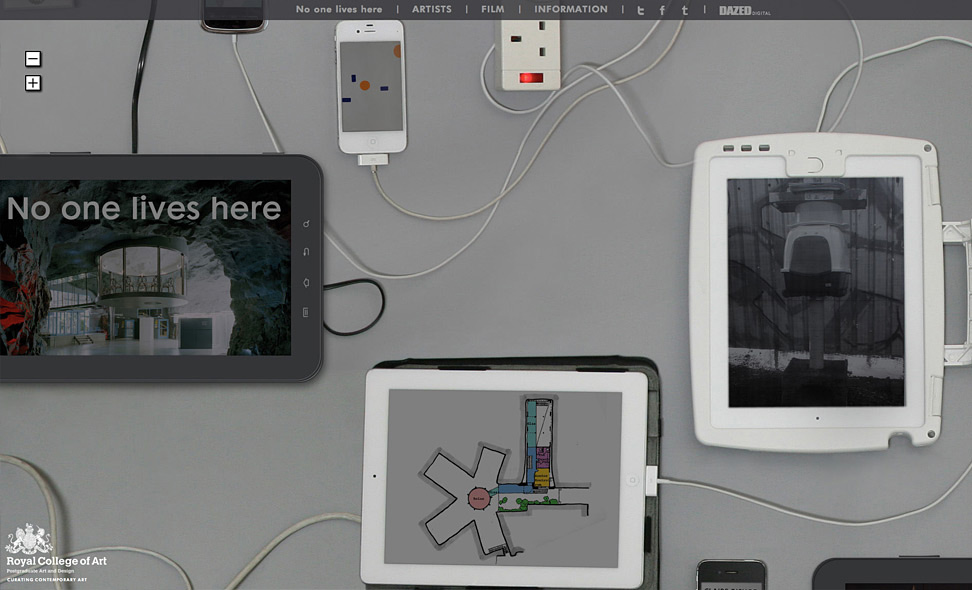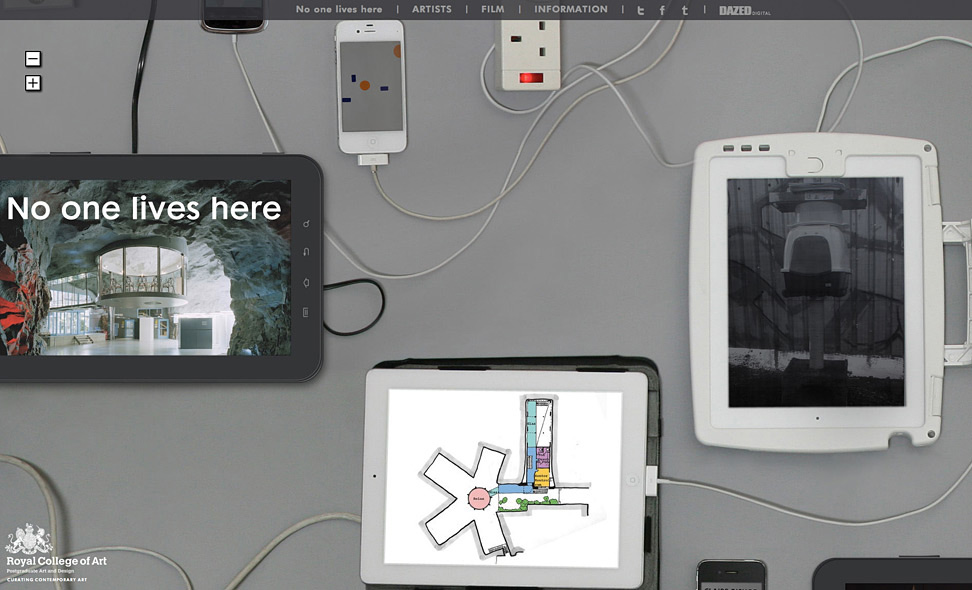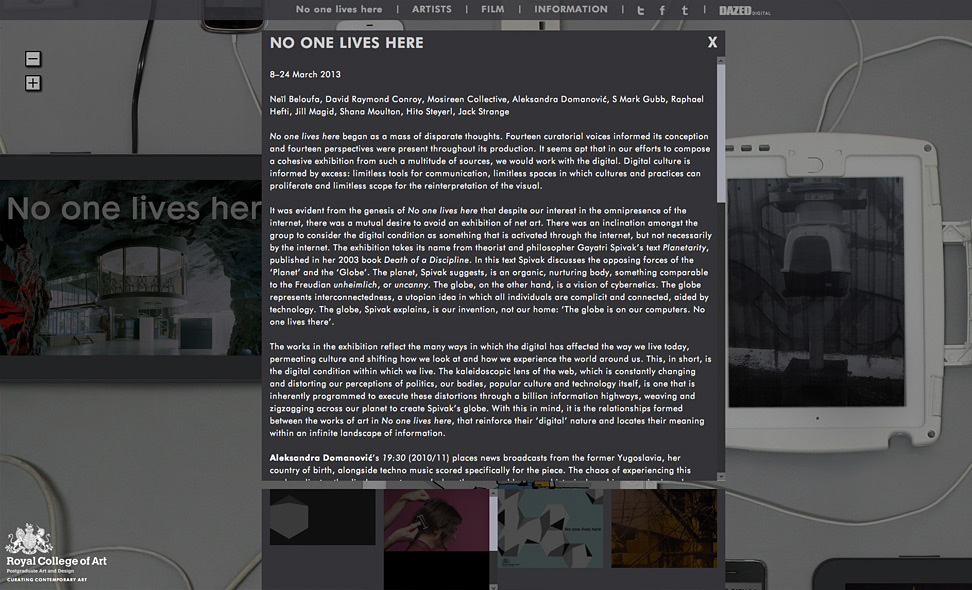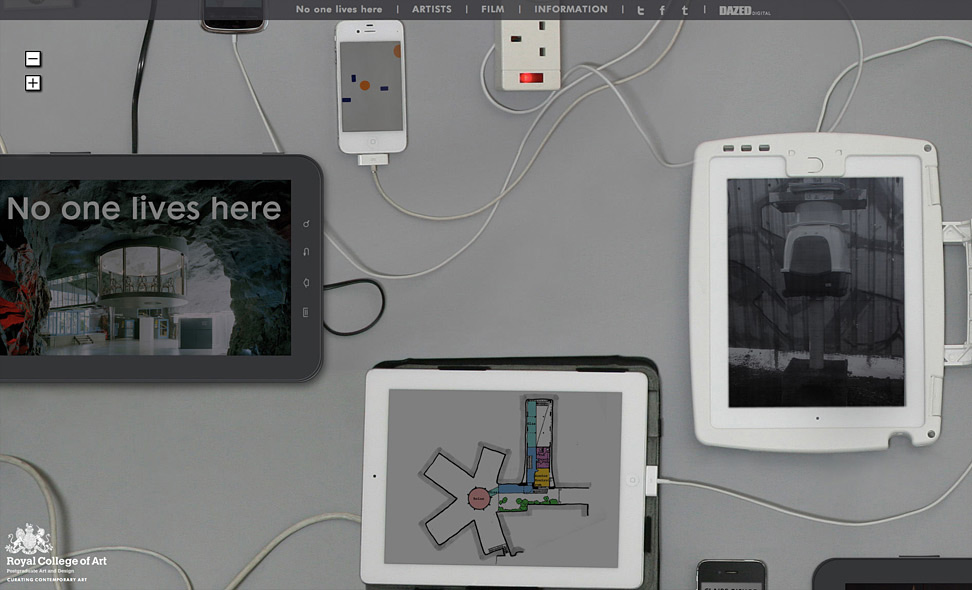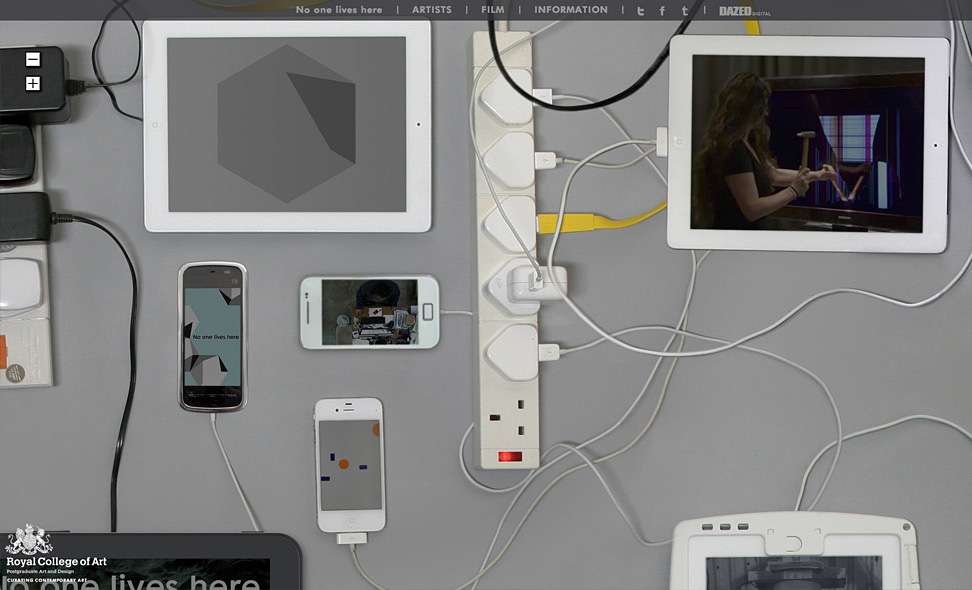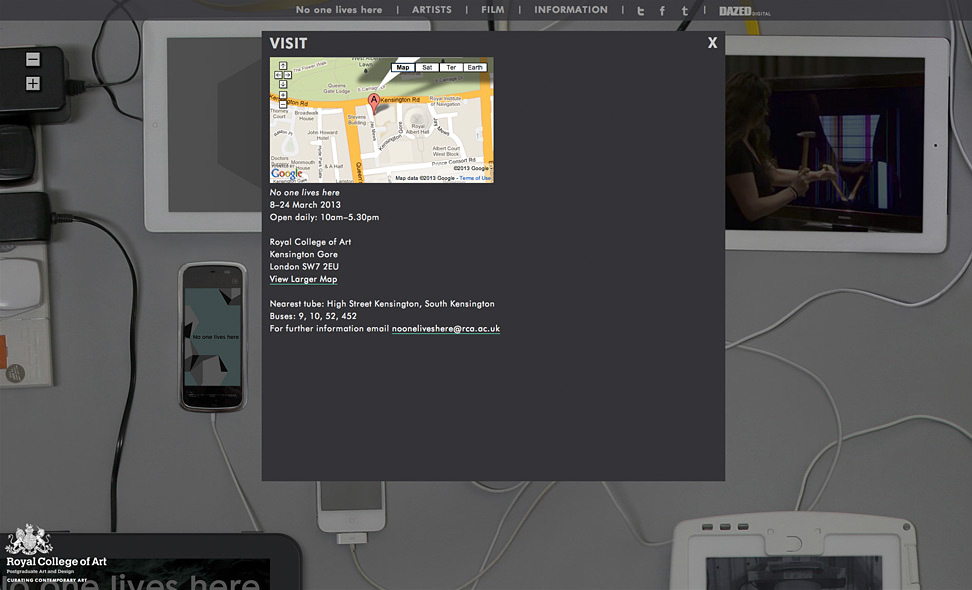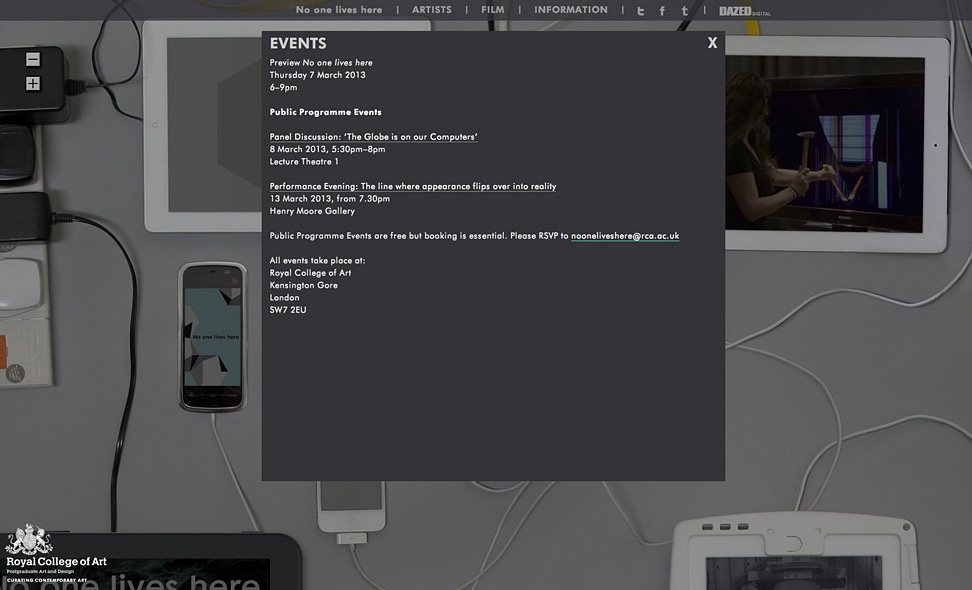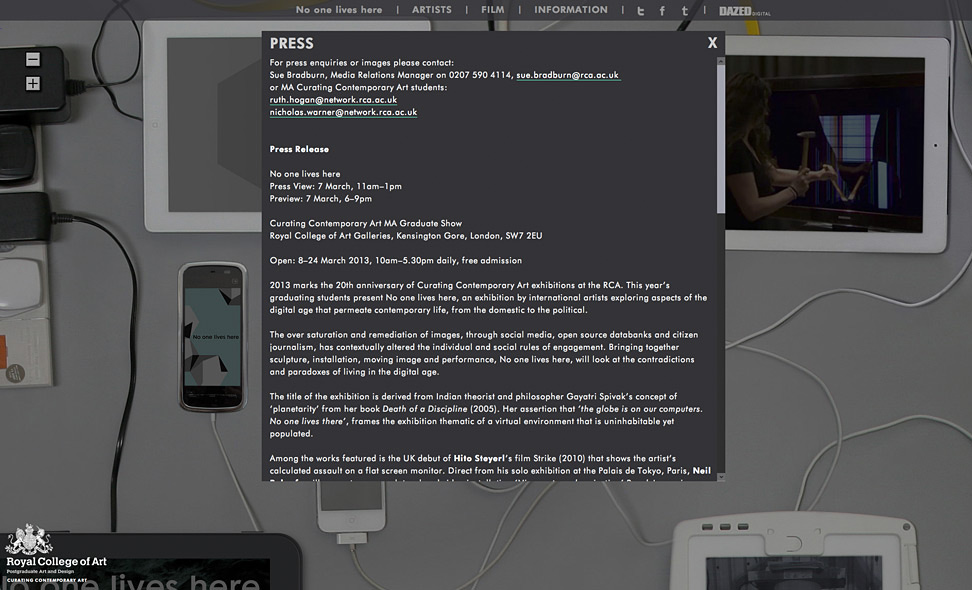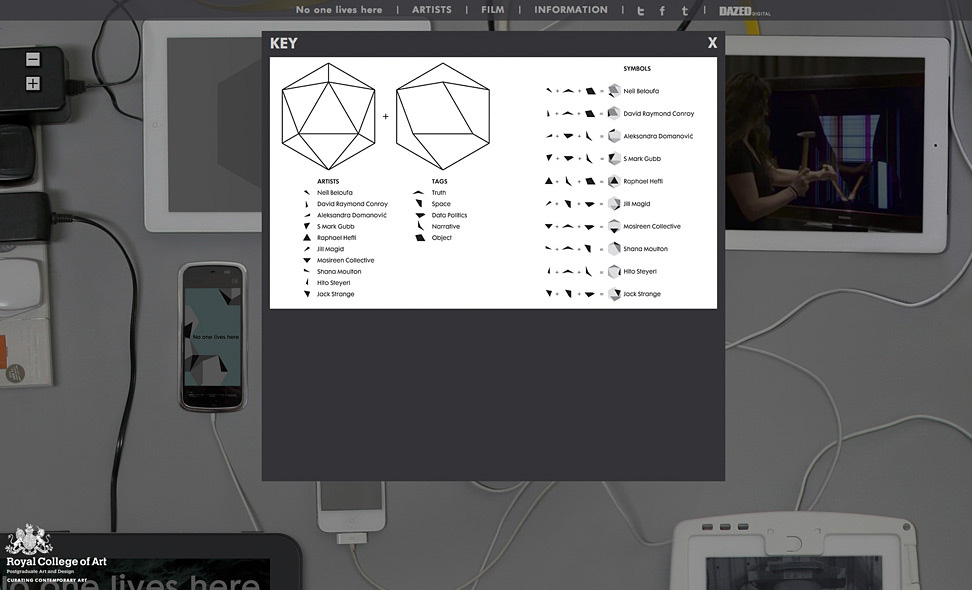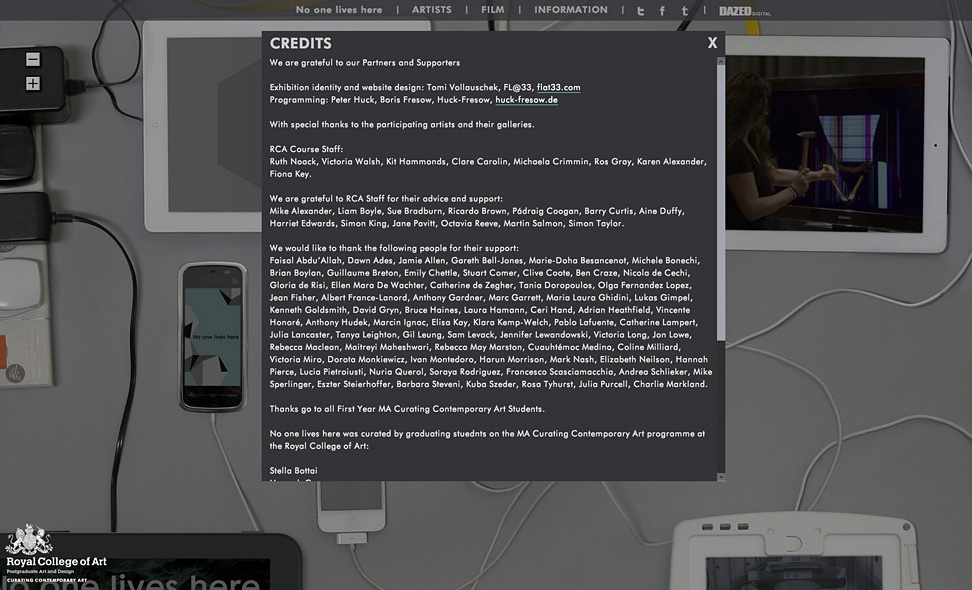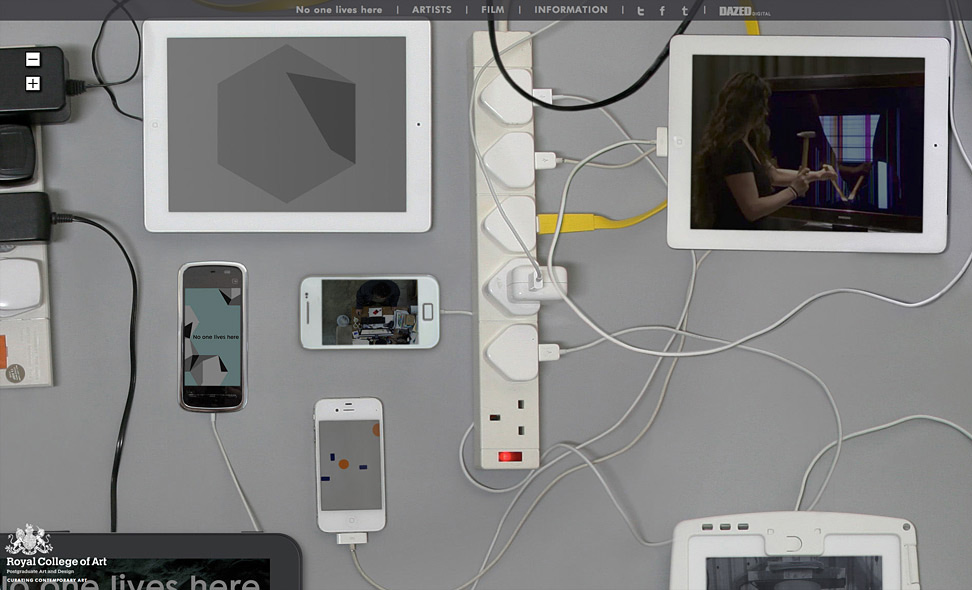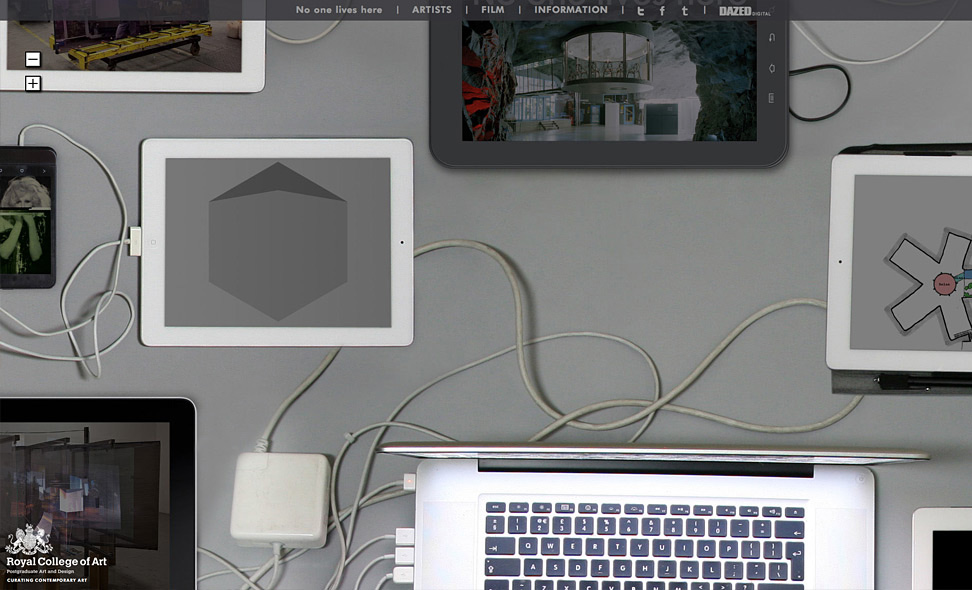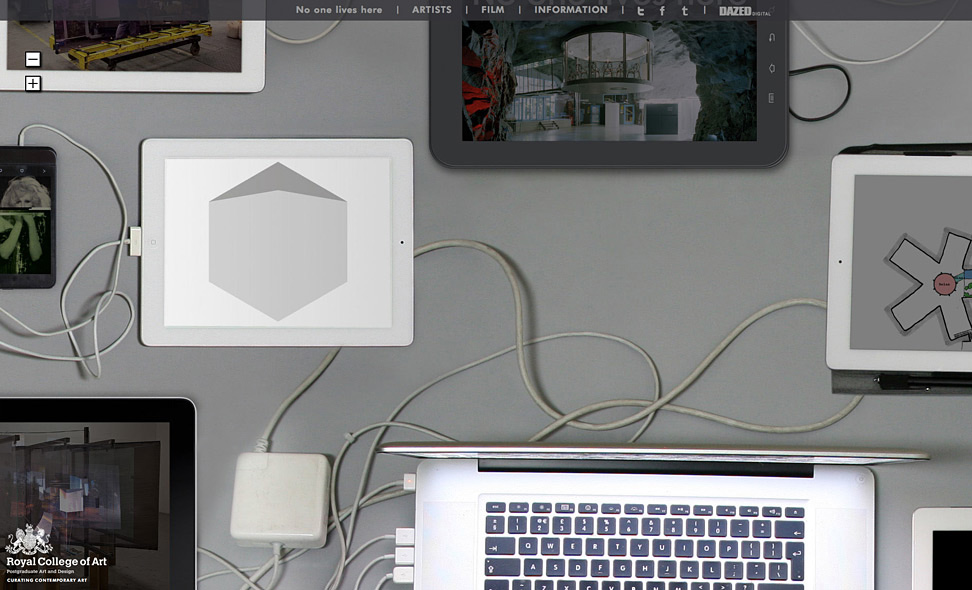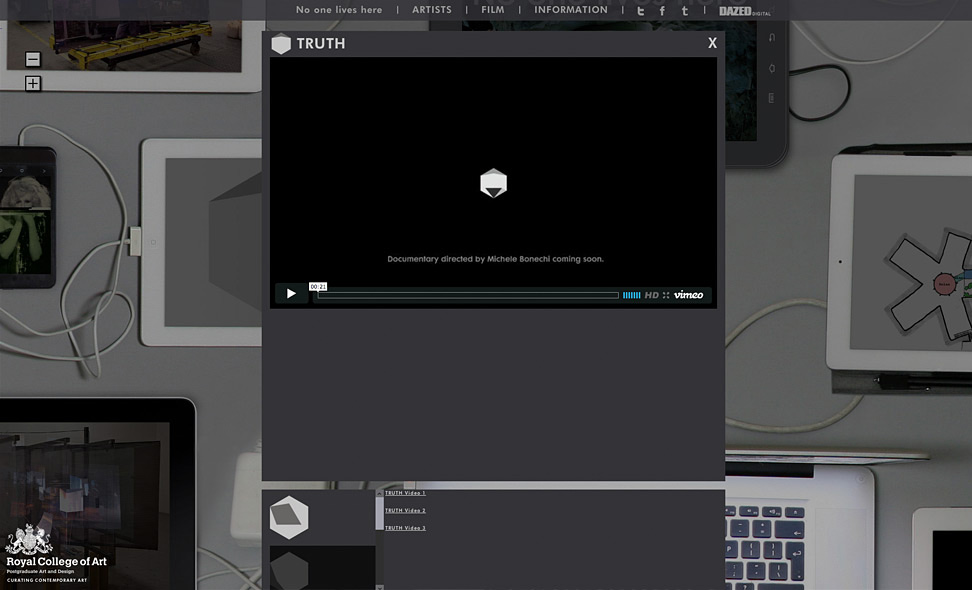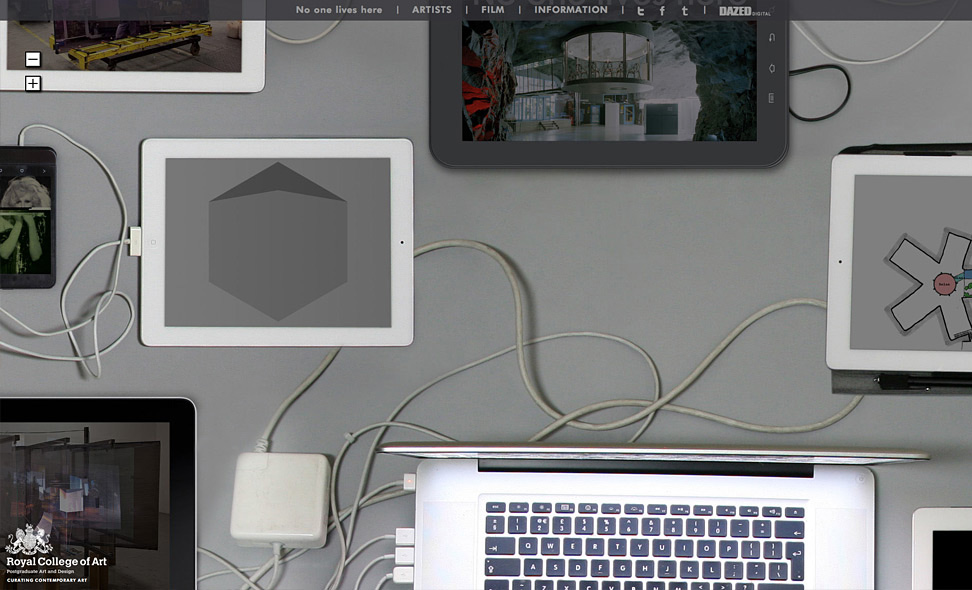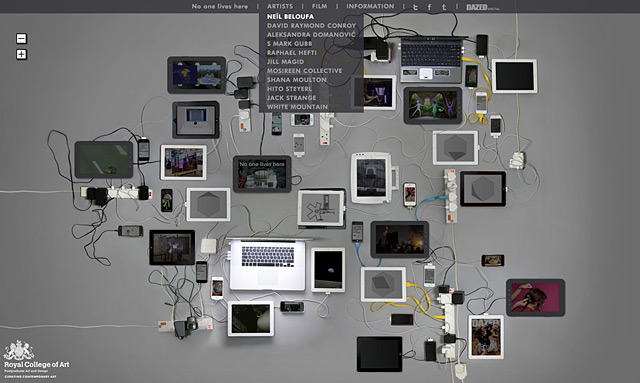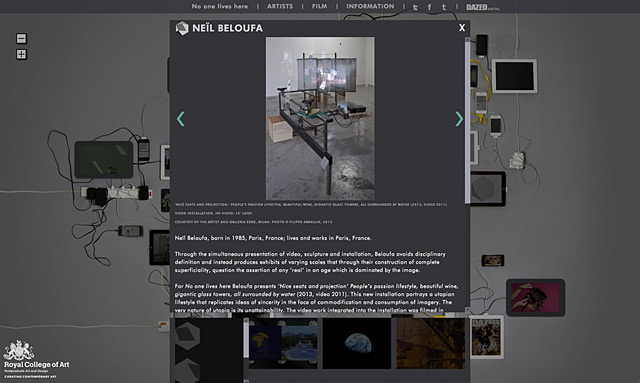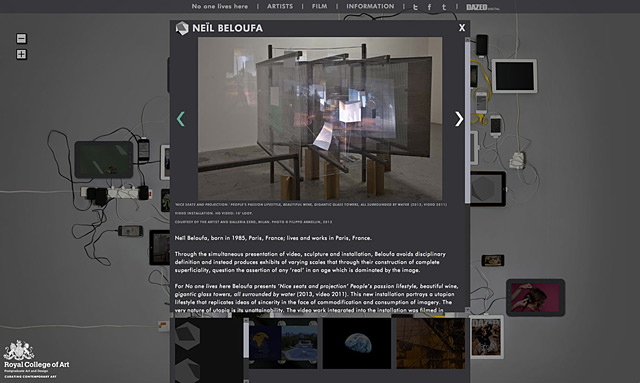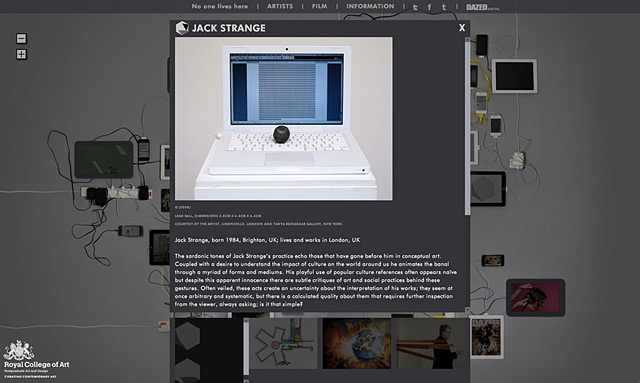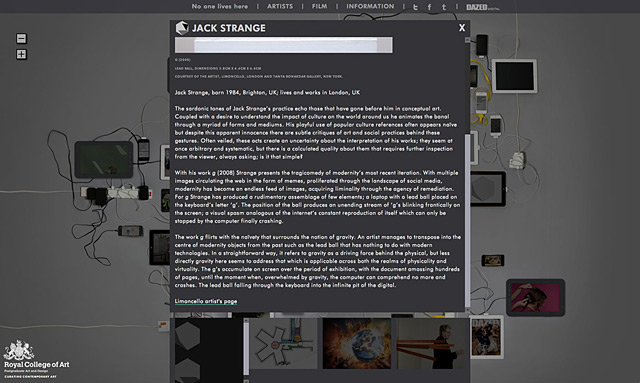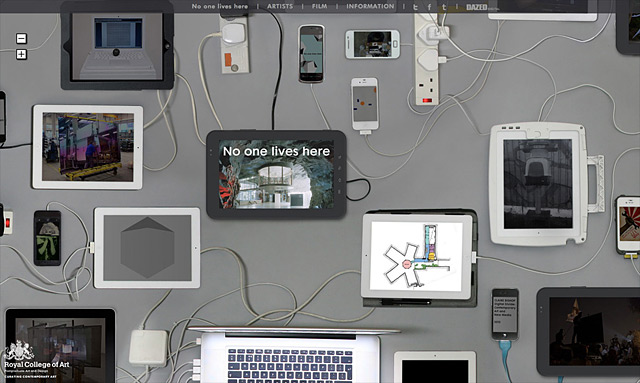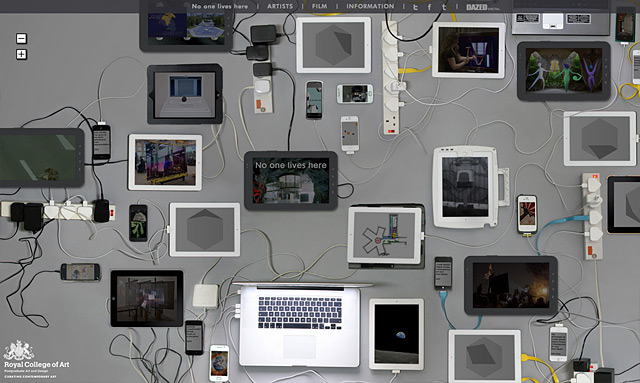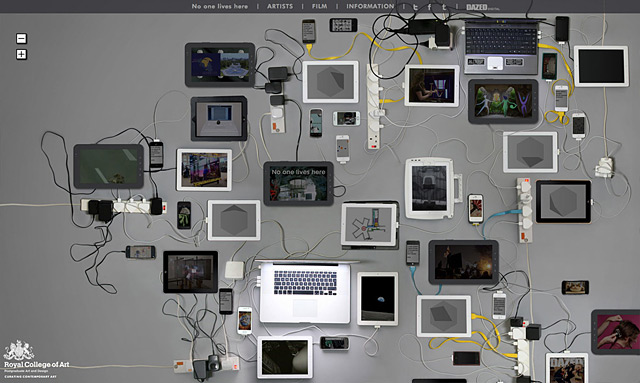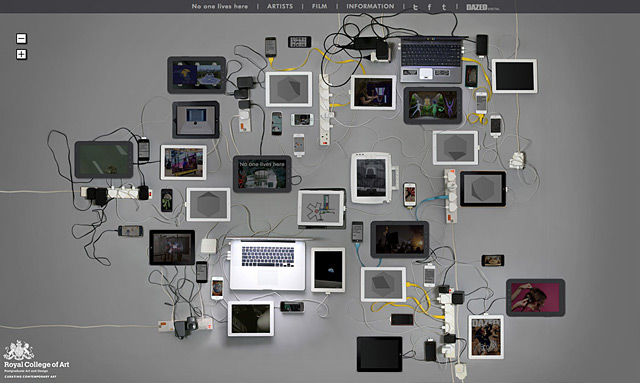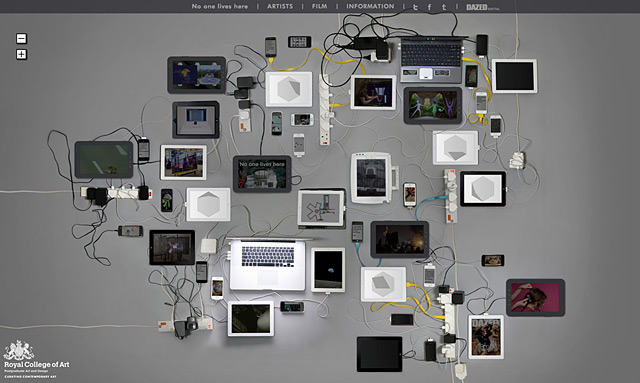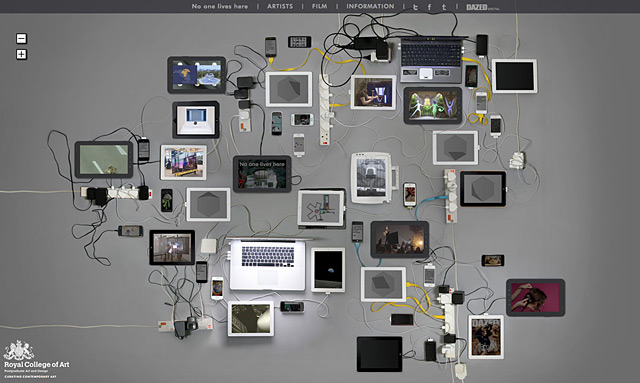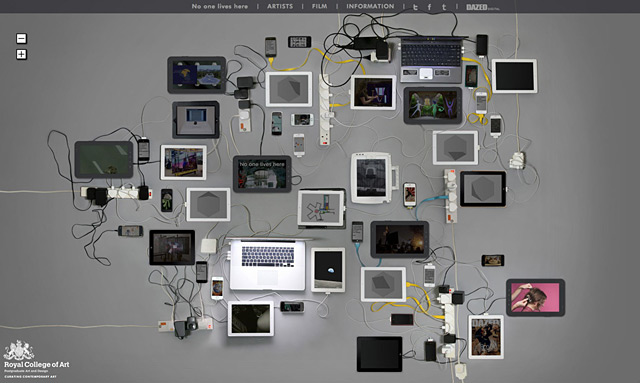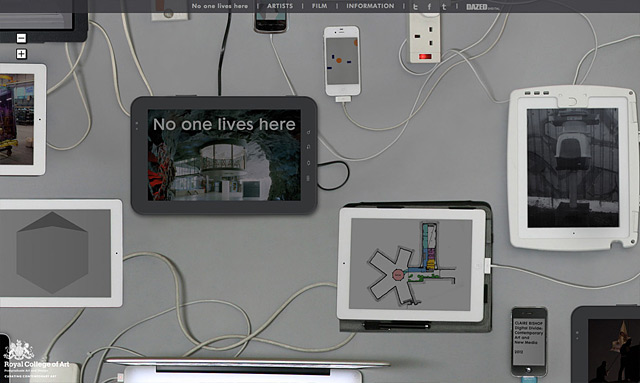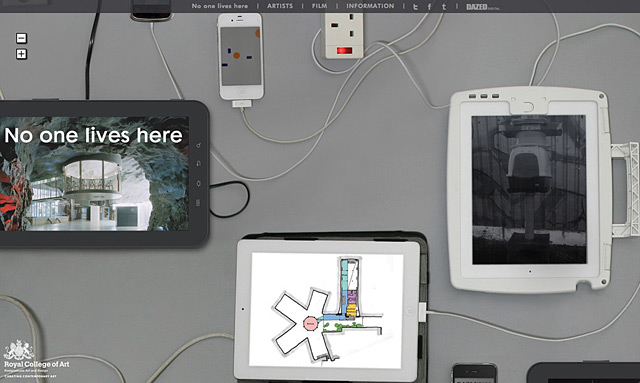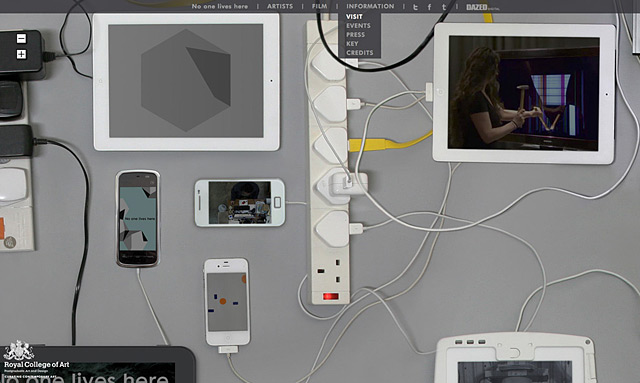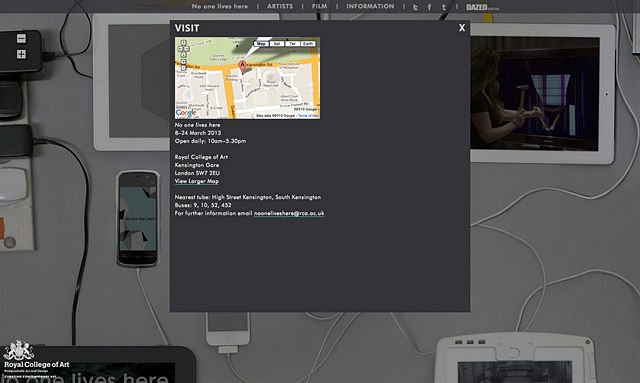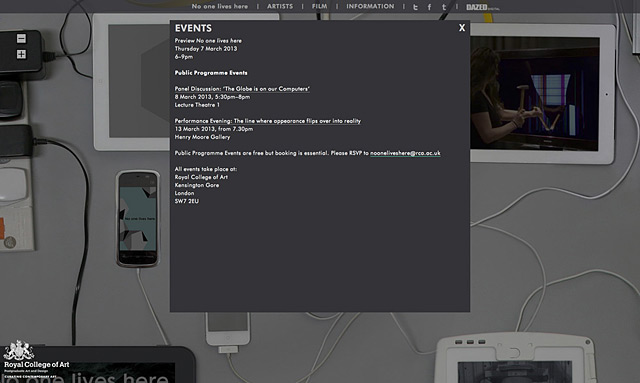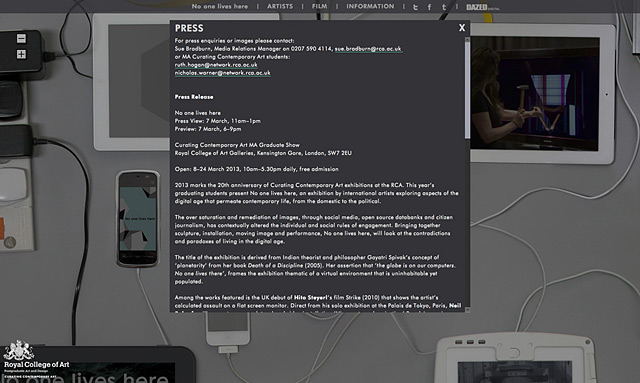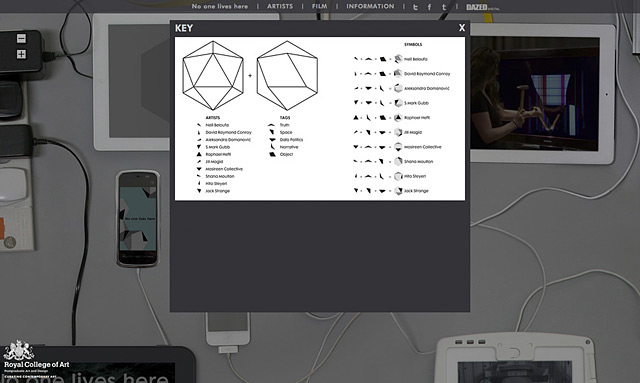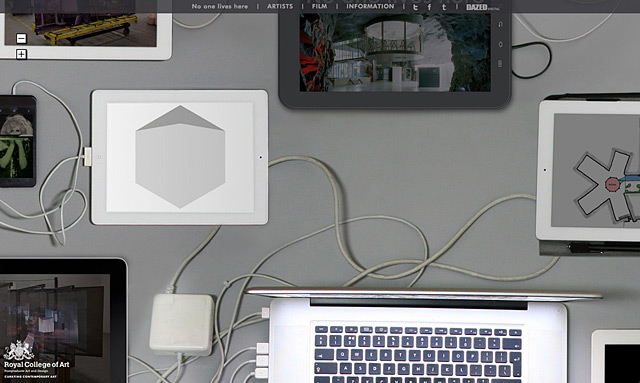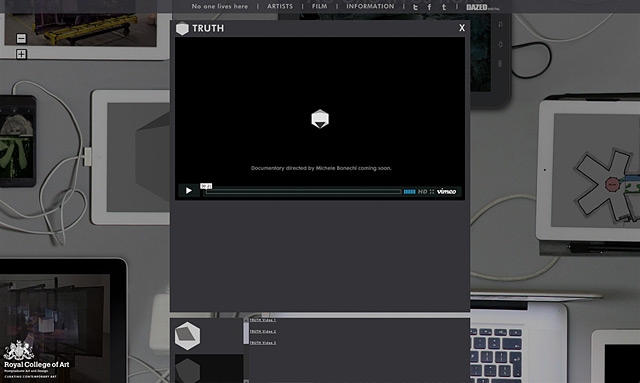RCA | CCA | NO ONE LIVES HERE | PHOTOSHOOT | EXHIBITION WEBSITE
The Royal College of Art's (RCA) MA Curating Contemporary Art (CCA) course commissioned FL@33 to create an exhibition identity system, a dedicated website and an exhibition catalogue for their show No one lives here. FL@33's Tomi Vollauschek worked very closely with the course's 14 final year students who curated the exhibition together. No one lives here opened its doors at London's prestigious RCA and stayed open for over two weeks.
___ We developed the dedicated exhibition website (nooneliveshere.rca.ac.uk) with a super-high-resolution Google Maps-style interface users could zoom in and out from. The website was based on a pinboard-style structure and a multi-layered appearance that allowed for two main sections to be fully interlinked and integrated – an artists' section and a dedicated section for a so-called 'interactive documentary'. This documentary was embedded into the website via Vimeo feeds and was produced by a filmmaker they hired separately. In addition to these two main sections extra pages covering essays, research, visitors' information and the likes were also added to the mix.
___ FL@33 created the tablet and smartphone interface idea and was responsible for the photoshoot and post-compositing job before developing the website in close collaboration with our regular team-extension for website programming: Huck und Fresow.
CLICK FOR MORE INFO | NO ONE LIVES HERE | OFFICIAL SYNOPSIS
No one lives here reflects the many ways in which the digital now permeates culture and conditions the way we live today. The kaleidoscopic lens of the web, constantly shifting our perceptions of politics, the body, popular culture and technology itself, is inherently defined by its processes of production and reproduction. With this in mind, it is the relationships formed between the works of art in this exhibition, both conceptual and visual, that situate them within a digital culture. The relationships formed between the works of art in No one lives here, reinforce their ‘digital’ nature
and locate their meaning within an infinite landscape of information.
___ The exhibition takes its name from Gayatri Spivak’s text Planetarity, published in Death of a Discipline (2003), in which the theorist and philosopher discusses the opposing forces of the ‘Planet’ and the ‘Globe’. According to Spivak the Planet is an organic, nurturing body; the Globe, on the other hand, is defined by our relationship to digital technology. The Globe represents a network of connections, a utopian idea where all individuals are complicit and linked. No one lives here adopts the contradictions produced by this shift. We once inhabited the Planet but increasingly we exist within the Globe.
___ Artists: Neïl Beloufa, David Raymond Conroy, Mosireen Collective, Aleksandra Domanović, S Mark Gubb, Raphael Hefti, Jill Magid, Shana Moulton, Hito Steyerl, Jack Strange
CLICK FOR MORE INFO | PIONEN DATA CENTRE | OFFICIAL EXHIBIT DESCRIPTION
This research display based around the Pionen Data Centre near Stockholm, acts as a preface to No one lives here. This former Cold War era civil defence bunker now houses thousands of terabytes of data, including politically sensitive materials, such as the WikiLeaks servers. Throughout the many months of research and discussion that have led to the formation of No one lives here, the Pionen Data Centre has come to epitomise the paradigm of virtuality that the exhibition wishes to consider. The Data Centre remains a purely functional space, built to house data and information; something inherently technological and lacking humanity. Yet interestingly, it is heavily aestheticised, made in
the vision of science fiction: designer furniture,
and steel structures juxtaposed against bare rock and foliage.
Categories: Campaigns, Environments | 3D, Illustration, Installations | Exhibits, Logos | Identities, Photography, Screen, Websites | Digital
Sectors: Culture | Arts, Education, Non Profit
